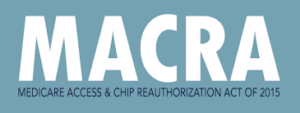New patient relationship categories and codes are one of the most important provisions of the Medicare Access and CHIP Reauthorization Act (MACRA), according to a piece in the New England Journal of Medicine.
In January 2018, the billing-code modifiers, which allow clinicians to report their relationship to a patient at a given point in time and for a particular service rendered, became effective on a voluntary basis. They help Medicare determine the extent to which a provider is responsible for elements of a patient’s care.

Ultimately, Medicare will use the new codes to assess clinician performance, particularly the use of resources and cost, and will likely tie them to reimbursement, according to authors Samuel U. Takvorian, MD; Justin E. Bekelman, MD; and Matthew J. Press, MD.
The patient relationship categories and codes will help payers to evaluate clinicians not only on patient outcomes but also on the resources they use and the costs they incur to achieve those outcomes, the doctors wrote.
“Thus, it will continue to be necessary to measure and attribute clinician responsibility for various aspects of care when assessing performance on cost-related measures under any new value-based payment program,” the article stated.
The codes characterize the relationships between clinicians and patients as either continuous or episodic and the care they provide as broad versus focused.
As an example, the authors cited the case of a patient with a new diagnosis of early-stage breast cancer, which might require care from a surgeon, oncologist, pathologist, radiologist and primary care physician.
The primary care doctor would provide continuous and broad services, whereas a breast surgeon would provide episodic and focused services while the patient underwent surgery and immediate follow-up. An oncologist might then oversee chemotherapy, providing episodic and focused services initially, but then provide ongoing monitoring and care, which could be reported as continuous and broad services.
The codes, therefore, reflect changes over time in a clinician’s relationship with the patient, and they can help identify which clinicians participating in MIPS were responsible for costs incurred.
According to the article, reporting of these billing-code modifiers is voluntary for now, and the Centers for Medicare & Medicaid Services plans further study before making reporting mandatory. There’s no time frame for implementation.
The authors highlighted several potential consequences, including clinicians accurately self-reporting their role in a patient’s care, adding to the administrative load of already overburdened clinicians and the risk that simplified codes won’t reflect the roles and responsibilities of clinicians while caring for a patient.
It gets complex trying to attribute costs and ultimately access each providers’ performance on cost-related measures and their resulting payment adjustment, they use. VTN



